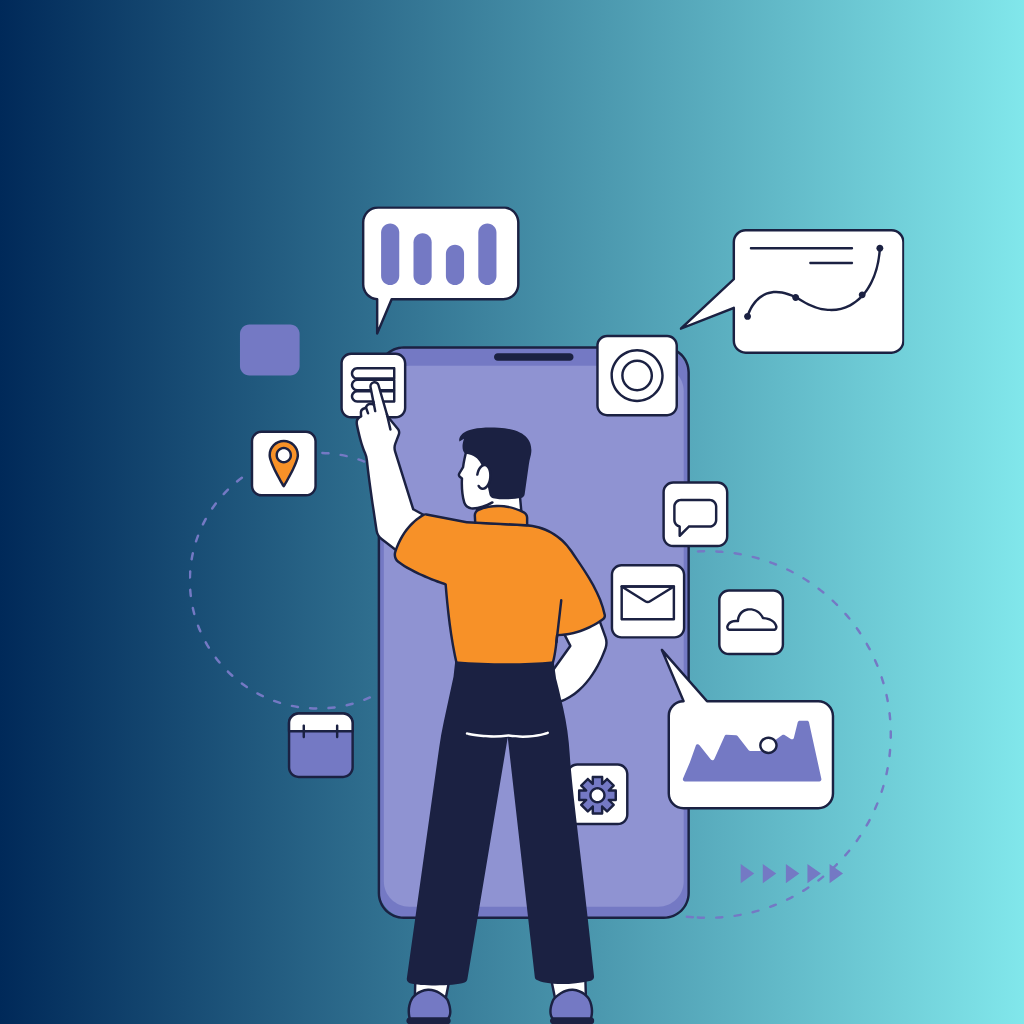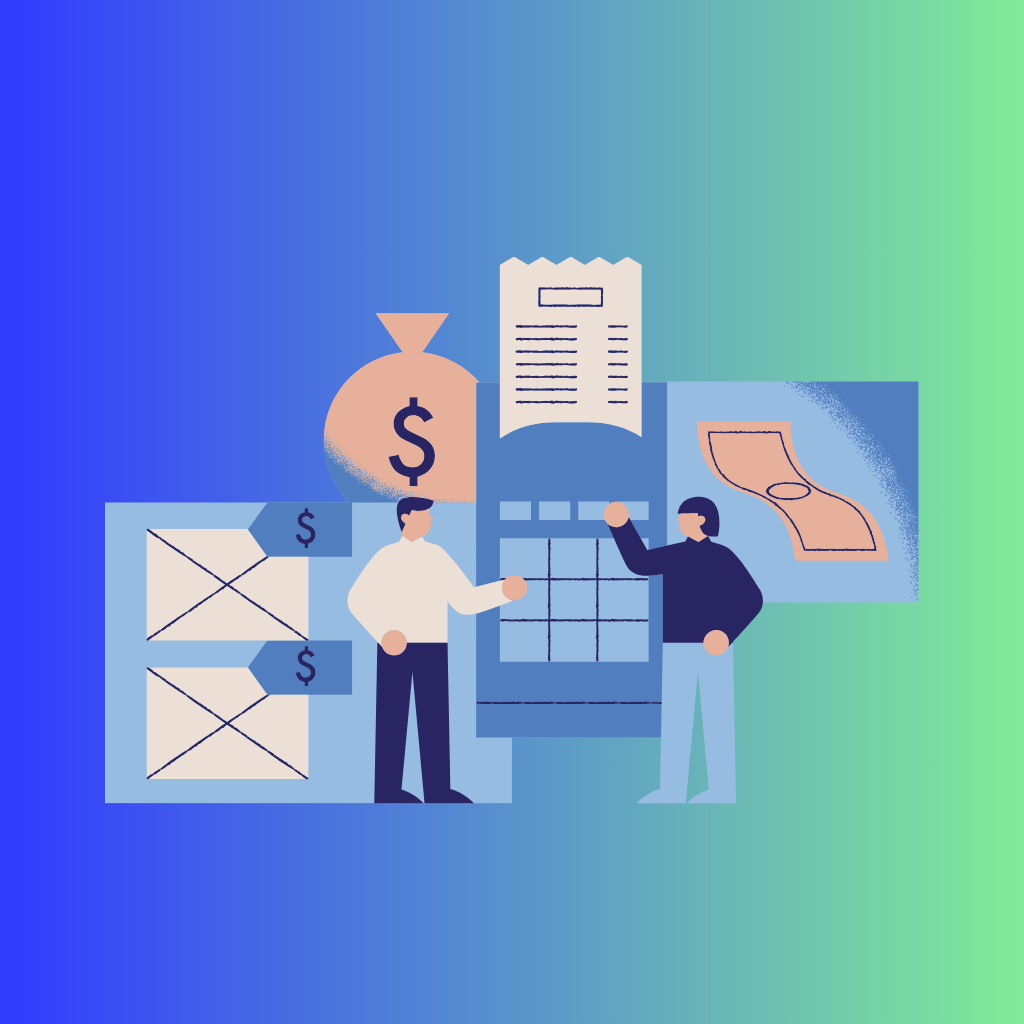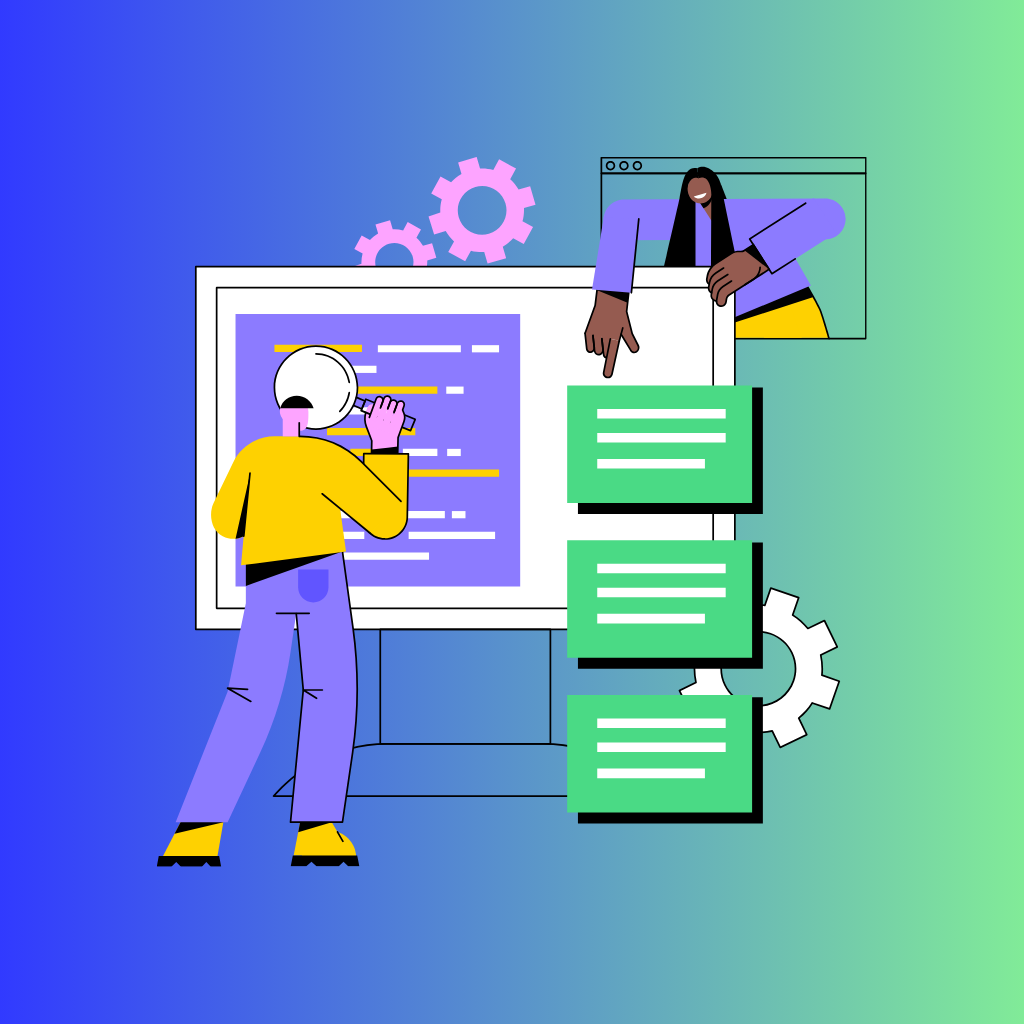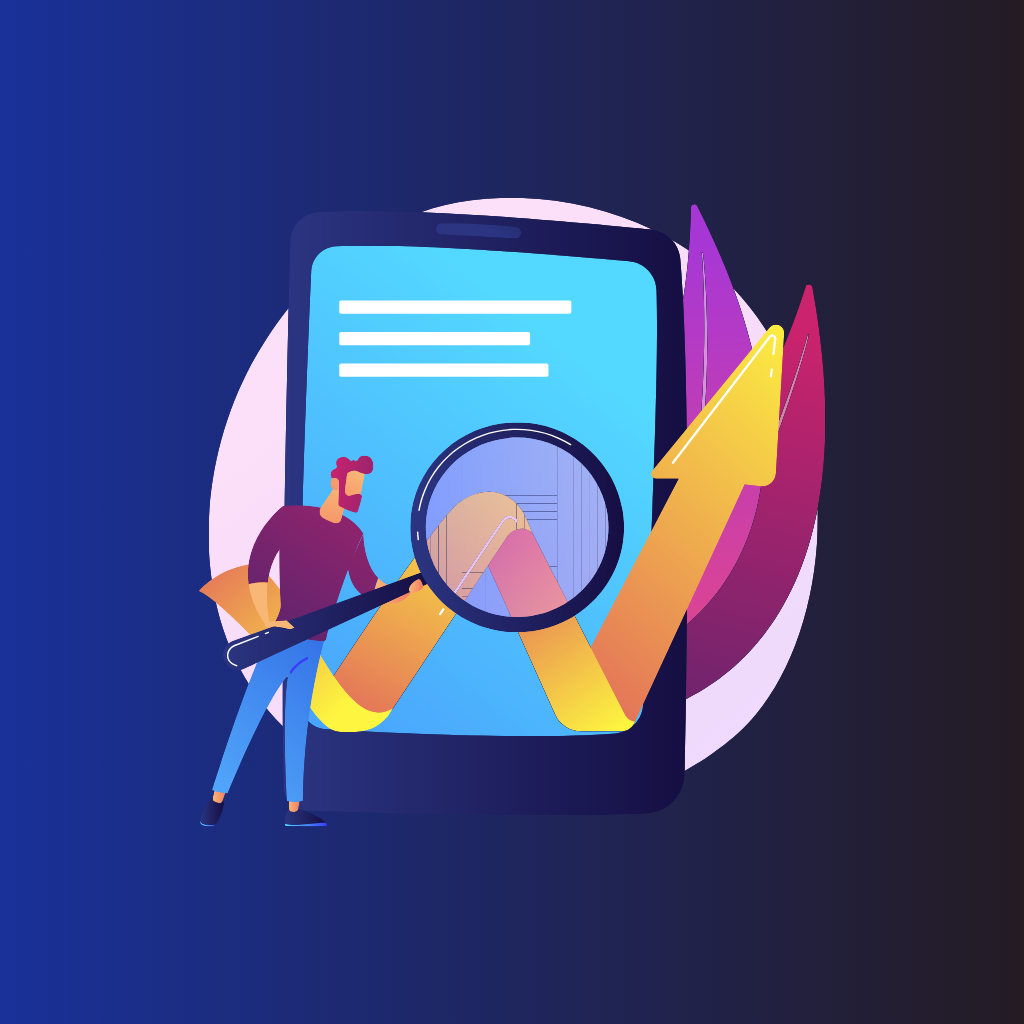Customer experience, or CX, in short, is the sum of every experience through which a customer goes with your business from the moment of initial awareness through post-purchase engagement. It may be in the form of how they use your service, how they interact with your product, how they react to your marketing, or how they approach your customer support. In short, it is the sum total of the feelings, perceptions, and impressions made by a customer, derived from their encounters with your brand.
Why is it important for business success?
Customer experience is important for the success of any business, as it is directly associated with increased customer loyalty, improved brand reputation, and increased revenue. Here's why CX is important:
- Increased Loyalty and Retention: Positive experiences build customer loyalty and will therefore get them back to your business and share your brand with others.
- Competitive Differentiation: A lot of times, better customer experience is what businesses require today, in order to become outstanding amidst competition.
- More Revenue: Satisfied customers tend to spend more, and businesses focusing on CX can experience revenue gains of up to 15%.
- Less Churn: Happy customers don't leave you for the competition, thereby reducing the churn rate.
- Word-of-Mouth Marketing: A good CX would ensure good reviews and word-of-mouth marketing, resulting in more patronage from new customers.
This blog is intended to provide you a step-by-step guide to develop your customer experience strategy, meant to enhance the relationship between your brand and your customers, improve satisfaction, and eventually drive growth in your business. Whether you're just beginning to focus on CX or you're fine-tuning your approach, this guide offers practical insights to ensure you're successful.
I. Know Your Customers
A. Customer Research
To be able to formulate an effective strategy for a customer experience, understanding the needs, preferences, and pain points of your customers is the key. Here's how you learn all of that:
- Surveys, Interviews, and Feedback Collection
- Surveys: Surveys can be conducted online, providing quantitative data on customer satisfaction, preferences, and expectations.
- Interviews: In order to obtain qualitative insights into the needs and challenges, in-depth interviews should be conducted with a sample representative of customers.
- Feedback Collection: Collect the feedback of the customers through various means which can range from website feedback forms, email follow-ups, and customer support conversations.
- Analyzing Demographic and Behavioral Data:
- Demographic Data: Collect the data on age, location, gender, income, and occupation in order to understand more about your audience.
- Behavioral Data: Analyze online data such as website clicks and page views, purchase history along with offline data, say store visits and customer support data, on customer behavioral preferences and trends.
B. Creating Customer Personas
Once you have collected and analyzed the data on customer information, you can go ahead to create a customer persona. Personas are just detailed profiles that represent key segments of your target audience.
-
Creating in-depth profiles of your ideal customers:
- Basic Information: Demographic information, such as age, gender, location, and occupation.
- Behavioral Traits: Their shopping habits, product preferences, and level of brand loyalty.
- Psychographic Characteristics: Bring to life their values, interests, attitudes, and lifestyle choices.
Sample persona template:
- Persona Name: “Tech-Savvy Sarah”
- Age Range: 25-35
- Location: Urban areas
- Occupation: Marketing Manager
- Interests: Latest gizmos, social media marketing, productivity apps
- Challenges: High-quality tech products that are within her budget
-
Customer Needs and Preferences Identification:
- Needs: What problems are customers trying to solve with your product or service? Example: "Sarah needs a reliable productivity app that will play well with all of her other tools."
- Preferences: How would they like to engage with your brand? Over email, via chat, or through social media? What would be the most important features for them, such as affordability and ease of use in design?
Elaborating precise and empathetic personas makes it possible to tailor the overall customer experience strategy to very specific needs and preferences within each target group, ensuring a much more personalized and effective CX.
II. Map the Customer Journey
A. Mapping the Customer Journey
What is a customer journey map?
A customer journey map is a visual illustration of all the stages and touchpoints that a customer goes through while working with your brand. It is a document that describes the customer's way from the very first acquaintance with your brand to the post-purchase one, which businesses can use to understand and optimize all the stages. A well-developed customer journey map highlights customers' emotions, needs, and challenges at any point, which makes it really possible to deliver a seamless and satisfying experience.
Key Touchpoints and Stages:
- Awareness:
- Touchpoints: Social media, blog posts, online ads
- Customer Goal: Discover potential solutions to their problem
- Brand Opportunity: Create relevant and insightful content that fulfills customer needs
- Consideration:
- Touchpoints: Product pages, webinars, case studies, comparison tools
- Customer Goal: Compare different solutions and assess their benefits
- Brand Opportunity: Offer transparency of information and show your product's unique selling points
- Purchase:
- Touchpoints: Pricing page, purchase funnel, customer support
- Customer Goal: Make a confident, informed purchase decision
- Brand Opportunity: Streamline the purchase process and offer support to overcome purchase barriers
- Retention:
- Touchpoints: Onboarding emails, user guides, customer support, loyalty programs
- Customer Goal: Get value from their purchase and feel supported
- Brand Opportunity: Offer proactive onboarding, responsive support, and incentives for repeat business
- Advocacy:
- Touchpoints: Review sites, social media mentions, referral programs
- Customer Goal: Share positive experiences and recommend the brand to others
- Brand Opportunity: Encourage reviews, referrals, and user-generated content to amplify advocacy
B. Identifying Pain Points and Opportunities
Areas Where Customers Face Challenges:
- Awareness Stage Pain Points:
- Overwhelming amount of information or confusing messaging
- Difficulty finding relevant, trustworthy resources
- Consideration Stage Pain Points:
- Lack of detailed information or clear comparisons
- Unclear pricing or hidden costs
- Purchase Stage Pain Points:
- Complicated or time-consuming checkout process
- Lack of customer support during decision-making
- Retention Stage Pain Points:
- Inadequate onboarding and lack of guidance
- Slow or unresponsive customer support
- Advocacy Stage Pain Points:
- Lack of incentive or recognition for customer advocacy
- Limited channels for sharing feedback or reviews
Opportunities to Enhance Customer Satisfaction:
- Awareness Stage Opportunities:
- Create clear, concise, and targeted content that addresses specific customer problems
- Use SEO strategies to ensure your brand is easily discoverable online
- Consideration Stage Opportunities:
- Offer comprehensive product comparisons, FAQs, and case studies
- Provide transparent pricing and highlight customer testimonials
- Purchase Stage Opportunities:
- Simplify the checkout process and offer multiple payment options
- Provide live chat or chatbot support to assist customers with questions
- Retention Stage Opportunities:
- Develop a robust onboarding program with guides, tutorials, and proactive outreach
- Implement a loyalty program to reward repeat customers
- Advocacy Stage Opportunities:
- Encourage satisfied customers to leave reviews or refer friends through incentives
- Share user-generated content and customer success stories on social media
Mapping the customer journey helps identify critical touchpoints where improvements can be made, ensuring that your strategy effectively addresses customer pain points while leveraging opportunities for enhanced satisfaction.
III. Designing a Customer-Centric Strategy
A. Core Principles Development
A customer-centric strategy must be underpinned by robust principles that guide every customer interaction. Here are three foundational core principles:
- Empathy:
- Definition: The understanding and sharing of the feeling of the customers.
- Application: Listen actively to customer feedback, acknowledge feelings, and present solutions that treat the specific issues.
- Example: A member of any customer-facing team responding to a complaint with genuine concern and providing the appropriate support.
- Personalization:
- Definition: Tailoring the customer experience based on individual preferences and behaviors.
- Application: Use customer data to recommend relevant products, target offers, and personal content.
- Example: An e-commerce site making recommendations for complementary products based on past orders.
- Consistency:
- Definition: Ensuring a uniform and consistent experience across all touchpoints.
- Application: Ensure that all teams adhere to brand guidelines, the right tone of voice, and level of customer service.
- Example: Providing the same high level of support no matter if a customer reaches out via chat, email, or phone.
B. Developing a Customer Experience Vision Statement
A Customer Experience (CX) Vision Statement outlines your customer experience goals and gets everyone in your organization on the same page for how to achieve this shared sense of purpose. In doing so, it helps guide strategic decisions. Here is how you put together an excellent CX vision statement:
- Key Ingredients of a CX Vision Statement:
- Customer-Centric Focus: Emphasize a focus on the customer.
- Core Principles: Reflect the core principles that will shape your strategy.
- Aspirational Goal: Set a high but achievable goal that inspires your team.
- Steps to Create Your CX Vision Statement:
- Identify Core Values: Determine the values that will define your customer interactions—e.g., empathy, transparency.
- Define Your Unique Selling Proposition (USP): Describe what is going to make your company different from your competition.
- Incorporate Customer Feedback: Use customer insights to help the vision be in line with them.
- Draft the Statement: Write a short statement that is 1-2 sentences long that captures your CX goal.
- Sample CX Vision Statements:
- Amazon: "To be Earth's most customer-centric company, where customers can find and discover anything they might want to buy online."
- Zappos: "To provide the best customer service possible. Deliver WOW through service."
- HubSpot: "Deliver a customer experience that's original, personalized, and remarkable."
- Your CX Vision Statement Template:
- "Our vision is to [core principle] by [unique offering] so that our customers [aspirational goal]."
- Example: "Our vision is to deliver empathetic and personalized service by understanding our customers’ unique needs, so that they feel supported and valued at every stage."
IV. Implementation of the Customer Experience Strategy
A. Company-Wide Buy-In
It is very important to obtain buy-in from the whole company for a customer experience strategy to succeed. Engaging the leadership as well as the employees ensures that all are aligned with the vision and committed to delivering exceptional customer experiences.
- Engaging Leadership:
- Importance: Leadership support is the pivot for the creation of a customer-centric culture.
- Actions:
- Advocacy: Senior leaders must champion the cause of the CX initiatives and underscore their importance in company meetings.
- Investment: Allocate resources for training, technology, and employee empowerment.
- Incentives: Executive pay aligned to CX metrics to create incentives to put CX at the forefront.
- Engaging Employees:
- Importance: Employees are the frontline ambassadors of the customer experience strategy.
- Actions:
- Communication: Ensure the vision of CX and core principles are communicated regularly to all employees.
- Feedback: Establish mechanisms for employees to bring in their ideas and thoughts on how customer experience could be improved.
- Recognition: Celebrate employees' contributions in providing a good customer experience through award systems or incentives.
B. Training and Empowering Employees
Customers should be well attended to by well-trained and empowered employees.
- Customer Service Training Programs:
- Content: Empathy, active listening, problem-solving, and conflict resolution.
- Formats:
- Workshops: Hands-on sessions facilitated by CX experts.
- E-Learning Modules: Team training that is global and flexible in terms of self-pacing.
- Role-Playing Exercises: Opportunity to apply the handling of different scenarios with customers.
- Empowering Frontline Staff to Resolve Issues:
- Authority: Give front-line workers sufficient authority to allow them to make some decisions on the spot to resolve customer problems.
- Guidelines: Set clear limits and acceptable action guidelines to solving common problems.
- Support: Provide escalation paths and managerial support in case of complex issues.
C. Technology and Tools
Use technology for customer behavior analytics, support in a seamless manner, and overall enhancement of customer experience.
- CRM Systems and Data Analytics for Customer Insights:
- CRM Systems:
- Objective: Centralize customer data to have one view of all customer interactions and history.
- Sample Tools: Salesforce, HubSpot, Zoho CRM
- Data Analytics:
- Objective: Analyze customer data to identify patterns, preferences, and pain points.
- Sample Tools: Google Analytics, Mixpanel, Tableau
- CRM Systems:
- Chatbots, Helpdesk Software, and Mobile Apps for Customer Support:
- Chatbots:
- Objective: Automated responses within seconds to frequently asked customer questions.
- Example Tools: Intercom, Drift, Zendesk Chat
- Helpdesk Software:
- Goal: To maintain customer support tickets to be more efficient and speed up the response time.
- Example Software: Zendesk, Freshdesk, Help Scout
- Mobile Apps:
- Purpose: Allow customers to access support, track orders, and stay engaged with your brand even while on the move.
- Sample Tools: In-house developed mobile apps, ServiceNow, HappyFox
- Chatbots:
VI. Measuring and Optimizing the Customer Experience
A. Key Metrics and KPIs
To gauge the effectiveness of your customer experience strategy, it's essential to track the right metrics. Here are three critical KPIs that can provide valuable insights:
- Net Promoter Score (NPS):
- Definition: Identifies customer loyalty by asking, "How likely are you to recommend our company/product/service to a friend or colleague?"
- Calculation: Customers rate on a scale of 0 to 10. The score is calculated using the difference between the percentage of detractors (0-6) and the percentage of promoters (9-10).
- Benchmarking:
- High scores are over 50.
- Industry benchmarks for NPS vary, so benchmark your NPS against your competition.
- Customer Satisfaction Score (CSAT):
- Definition: Measures customer satisfaction with a specific product, service, or interaction.
- Calculation: Customers have to provide a rating in terms of satisfaction on a scale ranging from 1 to 5 (or 1 to 10). The score is the ratio of the percentage of positive responses (4 or 5) to the total responses.
- Usage: Use CSAT for transactional feedback, such as after customer support interactions or post-purchase surveys.
- Customer Effort Score (CES):
- Definition: Measures how easily customers found it to achieve their intent, which might be to solve a problem or find information.
- Calculation: The customer is asked to rate the effort expended by them on a scale of 1 (very low effort) to 5 (very high effort). Calculate the score by the percentage of low-effort scores (1 or 2) to the total number of responses.
- Usage: A lower CES implies that customer experience is more frictionless.
B. Continuous Feedback and Improvement
Improving customer experience is an ongoing process that requires regular feedback and iterative enhancements.
- Routine Customer Feedback Collection:
- Surveys:
- Transactional Surveys: Collect feedback immediately after important interactions, like purchase and customer support calls.
- Relationship Surveys: Measure overall satisfaction from time to time (quarterly or annually).
- Feedback Widgets:
- Website Widgets: Embed the feedback widget in your website to capture real-time user input.
- Social Media Listening:
- Monitor your brand across social media to identify emerging trends and issues.
- Surveys:
- Iterative Improvements Based on Data Analysis:
- Detect Patterns: Analyze feedback and KPIs to see recurring pain points or opportunities.
- Prioritize Actions: Make sure to concentrate on the changes that will have the most impact on improving consumer satisfaction and reducing friction.
- Make Changes:
- Quick Wins: Start with the small, easily implemented changes first.
- Strategic Initiatives: Plan larger, cross-functional projects that address more systemic problems.
- Test and Refine:
- A/B testing or running pilot programs to validate changes before a big-bang full-scale implementation.
- Monitor post-implementation feedback for effective enhancements.
- Feedback Loop:
- Share Improvements: Let your customers know how their feedback has steered changes.
- Request More Feedback: Keep on asking your clients for feedback on different initiatives.
By systematically measuring key CX metrics and continually collecting customer feedback, you can refine your strategy to deliver a better customer experience that strengthens loyalty and drives growth
A customer experience strategy includes a series of steps based on your understanding of your customer and mapping out the journey for the alignment of your organization with the vision, which has to be customer-centric. Here are the basics of the key steps and principles:
- Knowing Your Customers:
- Undertake customer research with the use of surveys, interviews, and data analysis.
- Develop in-depth customer personas to understand their needs and preferences.
- Mapping the Customer Journey:
- Create a customer journey map, addressing key stages such as awareness, consideration, purchase, retention, and advocacy.
- Identify pain points and opportunities that currently exist and propose improvements to boost customer satisfaction.
- Designing a Customer-Centric Strategy:
- Develop core principles such as empathy, personalization, and consistency.
- Establish a robust Customer Experience Vision Statement that aligns the organization.
- Executing the Customer Experience Strategy:
- Engage leadership and employees in order to gain company-wide buy-in.
- Empower and train employees to provide excellent customer service.
- Leverage the power of technologies and tools like CRM software, chatbots, and help desk software.
- Measuring and Optimizing the Customer Experience:
- Keep track of key metrics, such as NPS, CSAT, and CES, to measure customer satisfaction.
- Gather continuous customer feedback and drive improvement through an iterative process with data analysis.
B. Next Steps and Actionable Tips
The following are some actionable tips you can consider to enhance your customer experience immediately:
- Survey Your Customers:
- Send a short survey to get feedback from customers on their last interactions or overall satisfaction.
- Simplify the Purchase Process:
- Check out the subscription or checkout process for steps that are not necessary and make it lean for a frictionless experience.
- Empower Your Frontline Employees:
- Let members of customer support give refunds, discounts, or accelerated customer service to solve the issue in time.
- Personalize Your Communication:
- Segment your email lists to enable you to provide deals and content personalized for the specific groups.
- Enhance Self-Service Options:
- Add a detailed FAQ section or chatbot to the website so that visitors can find quick answers to popular questions.
C. Motivation for Continuous Improvement
Customer experience development is a relentless journey and not a project. Stay one step ahead of your customers' expectations and those of industry trends by:
- Revisiting Strategy Periodically:
- Organize quarterly or biannual reviews to assess and iterate your customer experience strategy.
- Staying Agile:
- Be prepared to pivot your strategy with shifting customer needs and market conditions.
- Celebrating Small Wins:
- Celebrate and acknowledge each success, even if it is minimal, so the team remains inspired and directed toward the customer.
- Devoting to Learning:
- Attend webinars, read through industry reports, or attend networking events to keep up-to-date with the leading CX practices.
By instilling a culture of never-ending improvement and always putting the customer first, your business can build a customer experience that meets and exceeds expectations, turning satisfied customers into loyal advocates for your brand.






